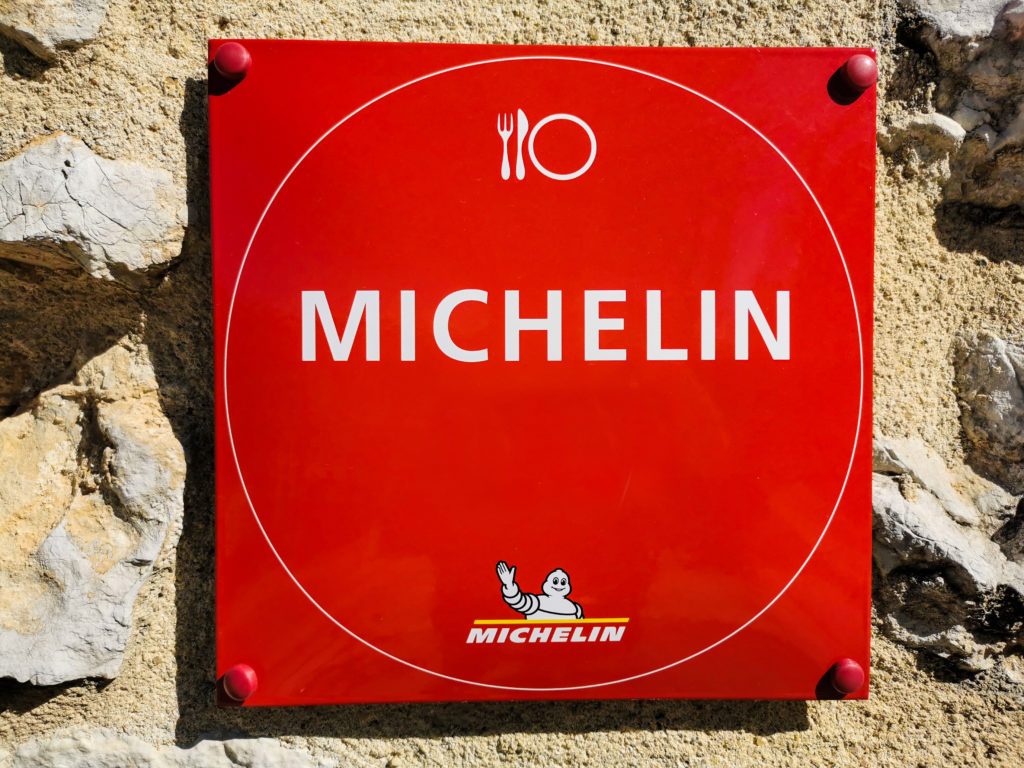The Michelin Guide - A History
As its jovial, tyre-clad logo reminds us, Michelin originated as a tyre manufacturer. In 1900, brothers and co-owners Andre and Edouard Michelin produced a small red guide which endeavoured to provide touring motorists with useful information. In addition to advice on breakdowns and car supplies, the book also offered suggestions on where to stop for a meal. While the guide’s foreword may have optimistically suggested that the book was “being published as a new century dawns, and will last just as long”, the Michelin brothers can have had little idea of just how successful and talked-about their ‘little red book’ would go on to become.

 The Michelin man, consisting of tyres is actually called Bibendum and there is a Conran restaurant in London named after him. The original company motto was “Nunc est Bibendum”, meaning let us drink. This was to illustrate that their tyres could “absorb” everything in their path.
The Michelin man, consisting of tyres is actually called Bibendum and there is a Conran restaurant in London named after him. The original company motto was “Nunc est Bibendum”, meaning let us drink. This was to illustrate that their tyres could “absorb” everything in their path.
By the 1920s, the Michelin Guide was becoming increasingly popular and the brothers began to see the potential in their creation. Rather than continue to give the book away for free, motorists were charged a few Francs to buy a copy. The dining section in particular was receiving much public interest, so – with the help of a team of inspectors – the guide began rating its restaurants. And so it was that the famous (or as some would later suggest, infamous) Michelin star was born. Originally awarding just one star to worthy eateries, the two and three star classifications quickly followed.
The Michelin Star System
Stars were awarded according to the following criteria:
- One star = Very good restaurant in its category
- ** Two stars = Worth a detour
- *** Three stars = Worth a special trip
There were some notable gaps in the publication of the annual guide, as well as some interesting historical occurrences. While no guides appeared during either of the World Wars, in the spring of 1944 the Michelin guide managed to make its own contribution to the war effort. As Allied forces prepared to enter occupied France, the destruction of road signs by the Germans posed a serious threat to troops finding their way around. To assist them, Washington gained special permission to reproduce the 1939 edition of the guide for “official use only”.
The book’s detailed town plans provided the perfect maps for the soldiers. In 1989 another historical event – the fall of the Berlin Wall – meant that the German guide had to be completely rewritten in order to incorporate the huge and so far unexplored area of Eastern Germany.
While the star criteria are unchanged to this day, an additional category was added in 1997. Featuring the Michelin Man himself, this new section celebrated restaurants offering excellent food at very reasonable prices – the “Bib Gourmand” list awards a knife and fork symbol rather than stars. Over time, Michelin traveled further afield and now features restaurants in countries across the world, including Britain, USA, China and Japan. So what about this years Irish winners? In the 2011 Irish guide, no restaurants were awarded the coveted three stars, with Patrick Guilbaud on Dublin’s Merrion Street remaining the only two star restaurant. 5 Restaurants retained their won one star and 16 received “Bib Gourmands”. And which Chef holds the most stars? He is the legendary Joel Robuchon who has a staggering 32 Michelin stars to his name. With one, two and three-starred restaurants in locations including Paris (above), Tokyo, Los Angeles and Monte Carlo, he can certainly stake a convincing claim to being one of the world’s greatest chefs.